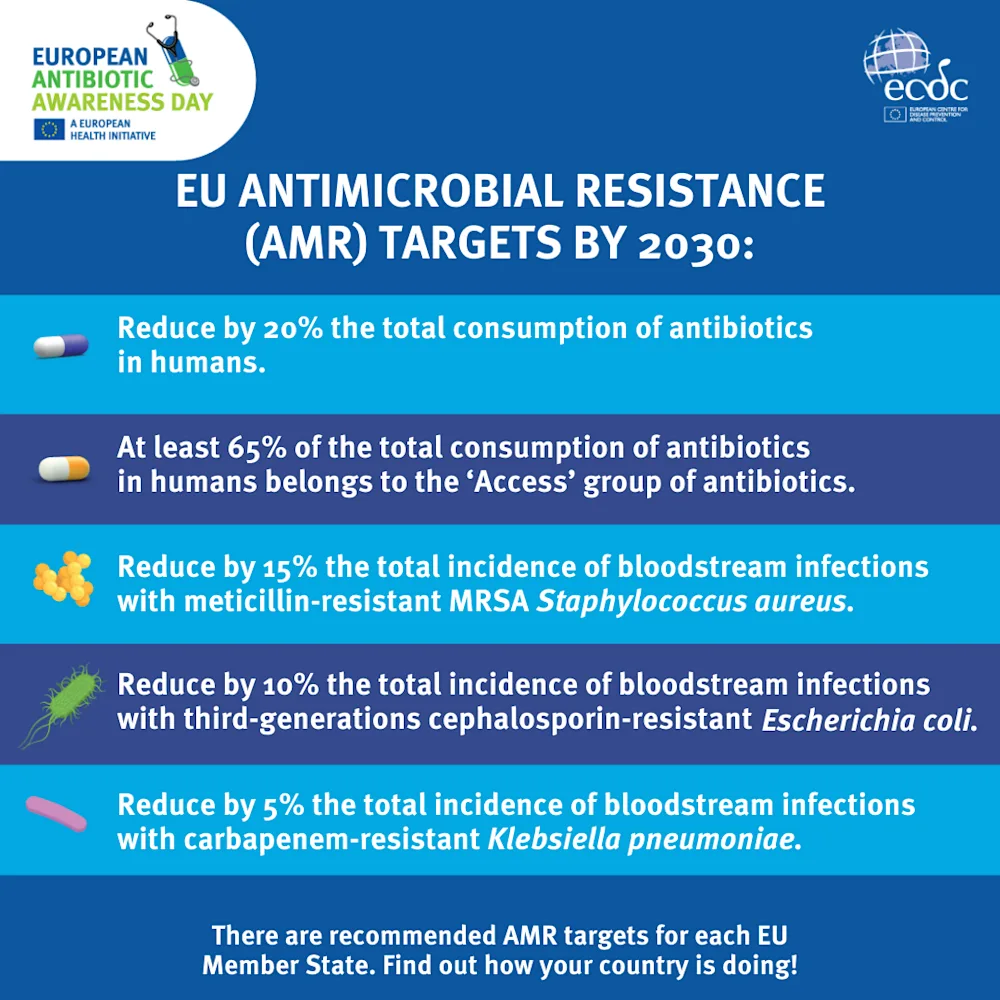This news article is more than a year old
Increasing Antimicrobial Resistance and Antibiotic Use in Europe
22nd November 2024
New data released earlier this week by the European Centre for Disease Prevention and Control (ECDC) suggest that European Union (EU) and European Economic Area (EEA) countries are not on track to meet their goal of reducing antimicrobial resistance and antibiotic use.

The Situation in Iceland
The total sale of antibiotics for human use in Iceland in 2023 was similar to the sales in 2019 and 2022 but significantly lower in 2020–2021 during the height of the COVID-19 pandemic. Icelanders use more antibiotics than other Nordic countries but rank average compared to EU/EEA nations. The incidence of infections associated with antimicrobial resistance (AMR) in humans is low in Iceland compared to many European countries. However, in 2023, the number notifiable cases of AMR-related infections in Iceland increased compared to recent years.
Although Iceland’s situation regarding antibiotic use and antimicrobial resistance is favorable in many respects, much work remains to be done. There are high expectations for the new national action plan and continued support from the government and key institutions to tackle this issue. International collaboration is also important; the Chief Epidemiologist participates in the EU-JAMRAI-2 project, a collaboration of 30 EU/EEA countries implementing diverse actions to against the spread of antimicrobial resistance.
The Situation in Europe
Antibiotic use, both in hospitals and in the community, increased by nearly 1% in the EU/EEA area between 2019 and 2023, moving further away from the EU’s goal of a 20% reduction in antibiotic use by 2030. This increase occurred despite a decline in antibiotic use in 2020 and 2021 during the height of the COVID-19 pandemic.
One of the most concerning trends is the nearly 60% increase in bloodstream infections caused by carbapenem-resistant Klebsiella pneumoniae bacteria between 2019 and 2023. Carbapenem-resistant bacteria are a growing threat to hospital patients across Europe, as few antibiotics are effective against infections caused by these pathogens.
It is estimated that infections caused by resistant bacteria are associated with over 35,000 deaths annually in EU countries. Additionally, more than 4.3 million European hospital patients acquire a healthcare-associated infection, many of them antibiotic-resistant, during their hospital stay.
Since approximately 70% of the AMR-related burden in EU/EEA countries is due to healthcare-associated infections, it is critical that infection prevention and control is prioritized in healthcare institutions. As in previous years, the situation varies significantly between EU/EEA countries, with the highest rates of AMR-related infections generally found in southern or southeastern Europe.
However, ECDC reports also included some positive news. The incidence of bloodstream infections caused by methicillin-resistant Staphylococcus aureus (MRSA) in EU countries was 17.6% lower in 2023 than in 2019, surpassing the EU’s 2030 target of a 15% reduction. Additionally, the incidence of bloodstream infections caused by Escherichia coli resistant to third-generation cephalosporins was also lower in 2023 than in 2019.
The Chief Epidemiologist
ECDC:
EU Targets for Antibiotic Use and Antibiotic Resistance by 2030 (Review 2024)
Eurosurveillance Article on Indicators for Antibiotic Use in Hospitals
The Directorate of Health:
